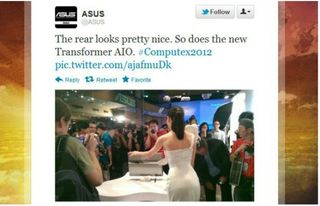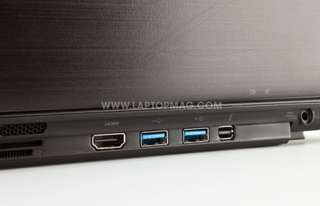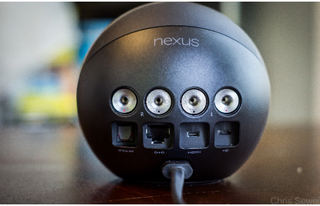Top 10 Tech Fails of 2012

A lot of good things happened in tech this year. The iPhone 5 premiered with 4G and a feather-light design. Google released its Nexus 7 tablet to go head-to-head with the Amazon Kindle Fire, and equipped it with Jelly Bean. Samsung delivered a powerful one-two punch with the Galaxy S III and Galaxy Note II. And we saw a fair number of Ultrabooks that gave the Macbook Air a run for its money.
But where there’s good, there’s bad. And there were plenty of major fails this year. Read on for the 10 biggest tech flops of the year.
Wrong-Way Award: Apple Maps
With all the anticipation surrounding iOS 6, many didn’t think twice about giving up Google Maps for Apple’s new Maps app. But once users switched over, the complaints and outcries that the iOS app was far inferior to Google Maps mushroomed. The app was riddled with errors, including wrong addresses and warped-looking landmarks in the Flyover view while it lacked integrated mass-transit directions.
Apple eventually apologized for the Maps gaffe, and even recommended alternatives. CEO Tim Cook probably put it best, saying "we screwed up."
More: 7 Things Apple Must Do in 2013
False Start Award: Windows 8
Sign up for the Live Science daily newsletter now
Get the world’s most fascinating discoveries delivered straight to your inbox.
After Microsoft released a preview of the highly anticipated Windows 8, users were dismayed to find that, although the new system's desktop was practically identical to the Windows 7 interface, it lacked a Start menu. Microsoft had substituted the menu with a shortcut to the Start screen, which meant users are forced to leave the desktop just to launch an app that takes them right back to the desktop.
Talk about frustrating. The good news is that a number of third parties have stepped up to the plate, including Stardock's Start8 and even laptop-makers like Samsung with its S Launcher utility.
Worst Sales Pitch: Dell’s “Daily Deals”
During LAPTOP’s annual Tech Support Showdown, we made three calls to Dell's tech support line and got more than we bargained for. During the calls, Dell pushed premium warranties on us, saying we had won a daily drawing that would allow us to buy a $500 four-year extended warranty for just $317. Lucky us — we were chosen to spend even more money on something we didn’t need! When we resisted, the representative rushed us through the call, barely attempting to answer our question, but routinely haranguing us to buy the warranty, because otherwise the next caller would get our "prize."
According to Dell, using "drawings" as a sales tactic is against company policy. However, aggressively pushing extended warranties and hardware purchases is not, as we experienced on two other calls where support reps seemed more interested in making a commission than solving our problems.
Most Sexist Tweet Award: ASUS at Computex

At this year’s Computex in Taiwan, ASUS tweeted a picture of its Transformer AIO with the caption, “The rear looks pretty nice. So does the new Transformer AIO.” Trouble was, the photo also highlighted the backside of a young woman who was showcasing the Transformer.
After understandably receiving tons of backlash, ASUS deleted the tweet. Then Digital Marketing Manager Tim Smalley released an apology, blaming a third party that had access to the company’s social media accounts. ASUS also sent out an apology tweet, but that didn’t stop the negative social media buzz.
More: The 10 Best Laptops of 2012
IP-(Uh)-O Award: Facebook
Although Facebook’s IPO initially set a record for technology companies by raising more than $16 billion, it quickly became the decade’s worst initial public offering. When the social networking giant went public in May, its initial offering price was set at $38, while the company was valued at $104 billion. However, a little more than two weeks later, Facebook shares had dropped dramatically to $26.90 per share.
As it turns out, Facebook’s inability to monetize mobile traffic has caused a lot of concern among investors.Although the stock has rebounded from a recent slide, the share is still way off the $38 debut price. Perhaps being added to the Nasdaq will help.
Biggest Rip-Off Award: Shared Data Plans
In June, Verizon unveiled its new Share Everything plans, which allow customers to pay a flat fee for each device, plus a single charge for shared monthly data, which ranges from 1GB to 10GB. The plan includes unlimited voice minutes and text messages and makes you pay for them, whether you need them or not. As a result, a 2GB data plan costs $100 on the new plan while 2GB with a limited number of minutes and texts cost $70 on the old plan.
AT&T followed suit with similar Mobile Share plans. However, neither of these shared-plan options lets you opt for limited voice minutes or data. Plus, you still need to pay an additional monthly fee as you add devices, whether it’s a tablet ($15 for AT&T, $10 on Verizon Wireless) or mobile hotspot ($50 for AT&T, $20 for Verizon Wireless). At least AT&T kept its individual plans for those who don’t want to go the shared route.
Reach-Around Award: Acer Aspire S5 Ultrabook

The Aspire S5 was the thinnest Ultrabook around when it debuted, but to achieve such a svelte profile, Acer incorporated a drop-down door to access the Ultrabook’s ports. A dedicated button raised and lowered this drawbridge, which made a loud whirring sound. Even worse, the ports are in the back, making it uncomfortable to reach around to plug in a USB cable. Some ideas should never leave the drawing board.
More: Top 10 Ultrabooks
Broken Promises Award: BB10
BlackBerry 10 has become somewhat of a punchline in the tech industry, with the release of RIM’s new OS continually delayed at a time when the straggling smartphone-maker should be trying anything to keep up with its Android and iPhone competitors. After a brief demonstration of BlackBerry 10 at BlackBerry World in May, RIM pushed back the operating system’s release until Q1 of 2013, and soon after slashed 5,000 jobs.
Although there are some features in BB10 that look promising, many BlackBerry loyalists have already jumped ship. We'll find out in January if RIM has a shot at a better 2013.
Bait-and-Switch Award: Microsoft Surface
When commercials for the Microsoft Surface started airing, viewers were enthralled by the device's Touch Cover. It came in fun, eye-catching colors and magnetically snapped onto the device for an easy typing experience.
One would assume that if Microsoft was putting the Touch Cover into its Surface commercials, it would come with the Surface, right? Wrong. Turns out the Touch Cover is a separate purchase, and shoppers would have to invest an additional $119 for the accessory ($100 if you buy it with the black one).
Bad Idea Award: Google Nexus Q

Google's Nexus Q could have easily made our list of most overpriced gadgets of all-time . . . if it had actually come out. First shown and given to attendees at Google I/O 2012, the Nexus Q is a set-top box in the shape of an orb that streams either music or movies to your home theater from Google Play and Google Play only.
While a $50 Roku box, a $100 Apple TV or a $99 Google TV box offers a variety of content services and even apps, the $299 Nexus Q didn't even have Netflix. Once you got over its unique design, the Nexus Q's main feature was allowing multiple users to add to the same playlist, something that was sure to create plenty of arguments among family members with different tastes. To Google's credit, the company quickly realized it had a dud on its hands, stopped accepting new orders and gave free units to anyone who had preordered.












